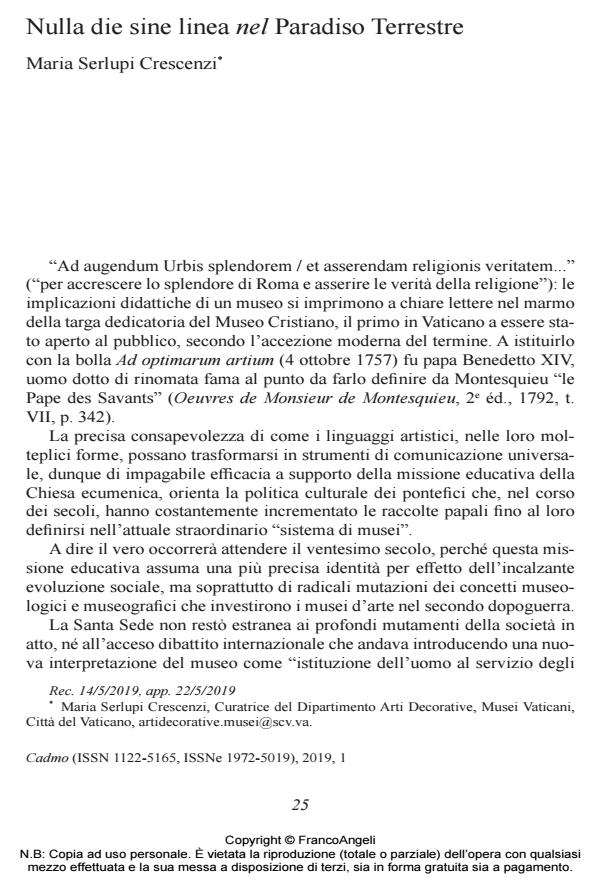Nulla die sine linea in the Paradiso Terrestre
Journal title CADMO
Author/s Maria Serlupi Crescenzi
Publishing Year 2019 Issue 2019/1
Language Italian Pages 9 P. 25-33 File size 167 KB
DOI 10.3280/CAD2019-001003
DOI is like a bar code for intellectual property: to have more infomation
click here
Below, you can see the article first page
If you want to buy this article in PDF format, you can do it, following the instructions to buy download credits

FrancoAngeli is member of Publishers International Linking Association, Inc (PILA), a not-for-profit association which run the CrossRef service enabling links to and from online scholarly content.
The educational action of Vatican museums was already implied in the words on the dedication plaque of Museo Cristiano, the first to be opened to visitors in 1757. In the Twentieth century, that mission has acquired a more precise cultural identity and in 1987 a specific Office for educational activities with schools was founded, thus underlining the relevance assigned to the relationship between cultural action and educational institutions, partners in the promotion of education and citizenship values. When the office was restored under the direction of Maria Serlupi, in 2008, a fruitful collaboration was started with Emma Nardi and the world of university. The project In Interiori Puero, created by Emma Nardi and ad dressing art and writing in schools, was thus truly welcomed in the Vatican setting. It showed a revolutionary impact in the schools, especially in a moment when hand writing has been so widely neglected. Significantly, calligraphy, in its same definition, is associated to drawing and, as such, to art, and this affinity marks the connection between writing and artistic creation, between reflection and creation.
Keywords: Hand-writing; cultural action; Vatican Museums; reflection; creativity.
Maria Serlupi Crescenzi, Nulla die sine linea nel Paradiso Terrestre in "CADMO" 1/2019, pp 25-33, DOI: 10.3280/CAD2019-001003